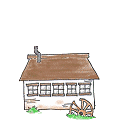
 2
2





















[img]http://i109.photobucket.com/albums/n52/havlik1/permie%20pics2/permiepotrait3pdd.jpg[/img]
"One cannot help an involuntary process. The point is not to disturb it. - Dr. Michel Odent








[img]http://i109.photobucket.com/albums/n52/havlik1/permie%20pics2/permiepotrait3pdd.jpg[/img]
"One cannot help an involuntary process. The point is not to disturb it. - Dr. Michel Odent









 .
.[img]http://i109.photobucket.com/albums/n52/havlik1/permie%20pics2/permiepotrait3pdd.jpg[/img]
"One cannot help an involuntary process. The point is not to disturb it. - Dr. Michel Odent








 . I wish I had a wood stove. then maybe my kitties wouldn't be glued to my head all night. I guess they say that 90% of your heat escapes through your head and the cats know it. miss chi chi regularly gets thrown (quite literally) off the bed because she will bit and claw me when I shift around to a position she dislikes. my other kitty moses, is old and he has really stinky breath. I need to turn a heating pad on somwhere or something. love ya kitties but GET AWAY FROM ME! if i lock them out of the room they reach their arms under the door and shake it producing a thunk thunk thunk every 3 seconds through the night. grrrr.
. I wish I had a wood stove. then maybe my kitties wouldn't be glued to my head all night. I guess they say that 90% of your heat escapes through your head and the cats know it. miss chi chi regularly gets thrown (quite literally) off the bed because she will bit and claw me when I shift around to a position she dislikes. my other kitty moses, is old and he has really stinky breath. I need to turn a heating pad on somwhere or something. love ya kitties but GET AWAY FROM ME! if i lock them out of the room they reach their arms under the door and shake it producing a thunk thunk thunk every 3 seconds through the night. grrrr. [img]http://i109.photobucket.com/albums/n52/havlik1/permie%20pics2/permiepotrait3pdd.jpg[/img]
"One cannot help an involuntary process. The point is not to disturb it. - Dr. Michel Odent
 1
1
























[img]http://i109.photobucket.com/albums/n52/havlik1/permie%20pics2/permiepotrait3pdd.jpg[/img]
"One cannot help an involuntary process. The point is not to disturb it. - Dr. Michel Odent





[img]http://i109.photobucket.com/albums/n52/havlik1/permie%20pics2/permiepotrait3pdd.jpg[/img]
"One cannot help an involuntary process. The point is not to disturb it. - Dr. Michel Odent





























QuickBooks set up and Bookkeeping for Small Businesses and Farms - jocelyncampbell.com






















QuickBooks set up and Bookkeeping for Small Businesses and Farms - jocelyncampbell.com









Laughter is the best medicine.
http://www.lawntimes.com
















Projects, plans, resources - now on the Permies.com digital marketplace.
Try the Everything Combo as a reference guide.














|
So then I told Joseph Stalin to piss off! Remember that tiny ad?
Learn Permaculture through a little hard work
https://wheaton-labs.com/bootcamp
|


